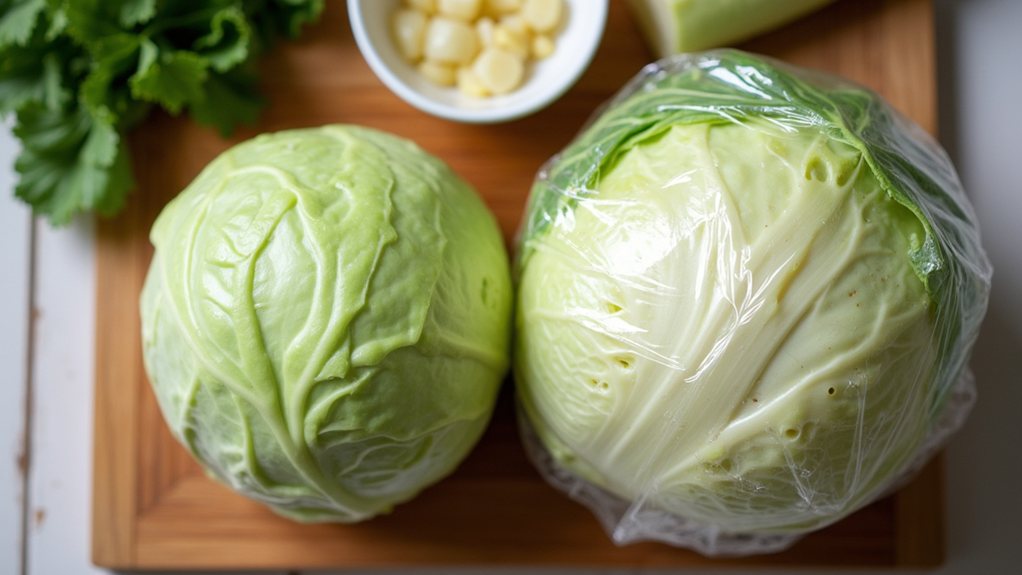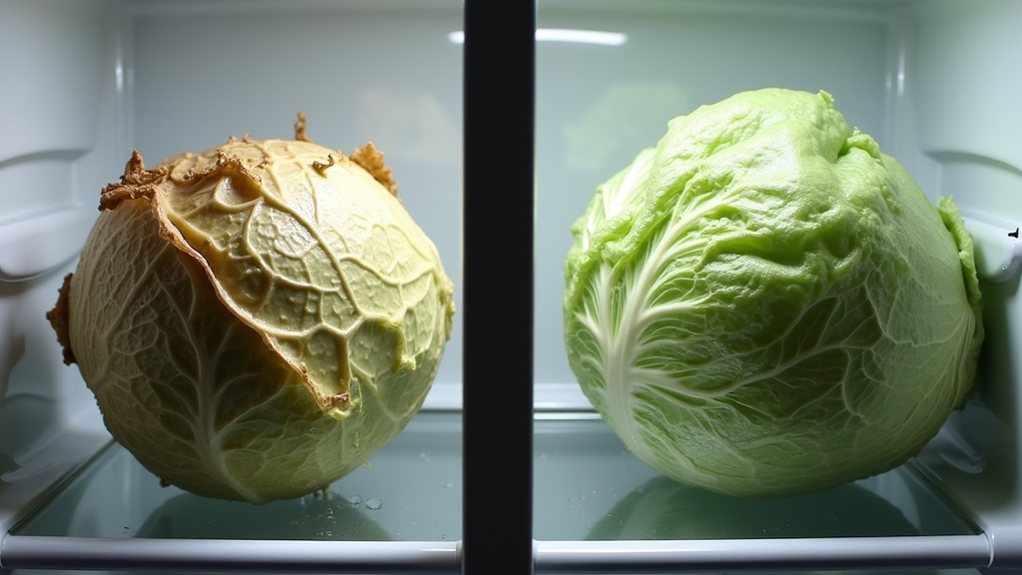Cabbage storage seems simple, but many home cooks unwittingly compromise this vegetable’s longevity and nutritional value through common mistakes. The humble cabbage, when properly stored, can maintain its crisp texture and vitamin content for months rather than weeks. Temperature control in the refrigerator crisper drawer plays an essential role, as does the balance of humidity and airflow. With just a few adjustments to current practices, anyone can transform their cabbage from a rapidly wilting disappointment into a long-lasting kitchen staple.
The Best Cabbage Storage Methods for Maximum Freshness

Few vegetables offer the remarkable versatility and storage potential of cabbage, a hardy cruciferous vegetable that can last for months when properly stored. Yet many home cooks unknowingly sabotage their cabbage’s longevity through improper storage techniques, missing out on the opportunity to enjoy this nutritious vegetable long after purchase. The key to maximizing cabbage freshness lies in understanding its specific storage requirements and implementing the right preservation methods.
Temperature control represents the foundation of effective cabbage storage, with D°C (32°F) being the ideal condition for best freshness. When storing cabbage in the refrigerator, loosely wrapping a whole head in a plastic bag and placing it in the crisper drawer helps maintain the 90% humidity level cabbage needs to prevent wilting.
Remember to remove the outer leaves and any visible dirt before refrigeration, as these can harbor moisture and accelerate spoilage.
For those seeking longer preservation periods, freezing offers an excellent solution, though proper preparation is vital. Blanching cabbage in boiling water for 90 seconds before freezing preserves its nutrients and texture.
Cut the cabbage into wedges or shreds prior to freezing for more convenient use later, and package it in airtight containers to prevent freezer burn. There’s no need to rinse cabbage before storing it in your refrigerator, which helps maintain its natural protective qualities.
Traditional preservation methods provide additional storage options with unique flavor benefits. Fermentation transforms cabbage into long-lasting foods like sauerkraut and kimchi, which can be stored for months when kept properly submerged to maintain anaerobic conditions. Similar to proper canned food storage, maintaining consistent temperatures for fermented cabbage products helps extend their shelf life significantly.
These fermented products not only preserve the cabbage but improve its nutritional profile through beneficial probiotic development.
For those with outdoor space and colder climates, time-tested storage techniques include burying whole cabbages in straw-lined pits to preserve them through winter. The straw provides significant insulation that prevents freezing while maintaining moisture levels.
To maintain maximum nutrients, keep cabbage whole until ready to use since cutting leads to significant vitamin C loss over time.
Through these different methods, cabbage can remain fresh and nutritious far beyond what most people realize, offering an economical and sustainable addition to the home cook’s ingredient arsenal.








